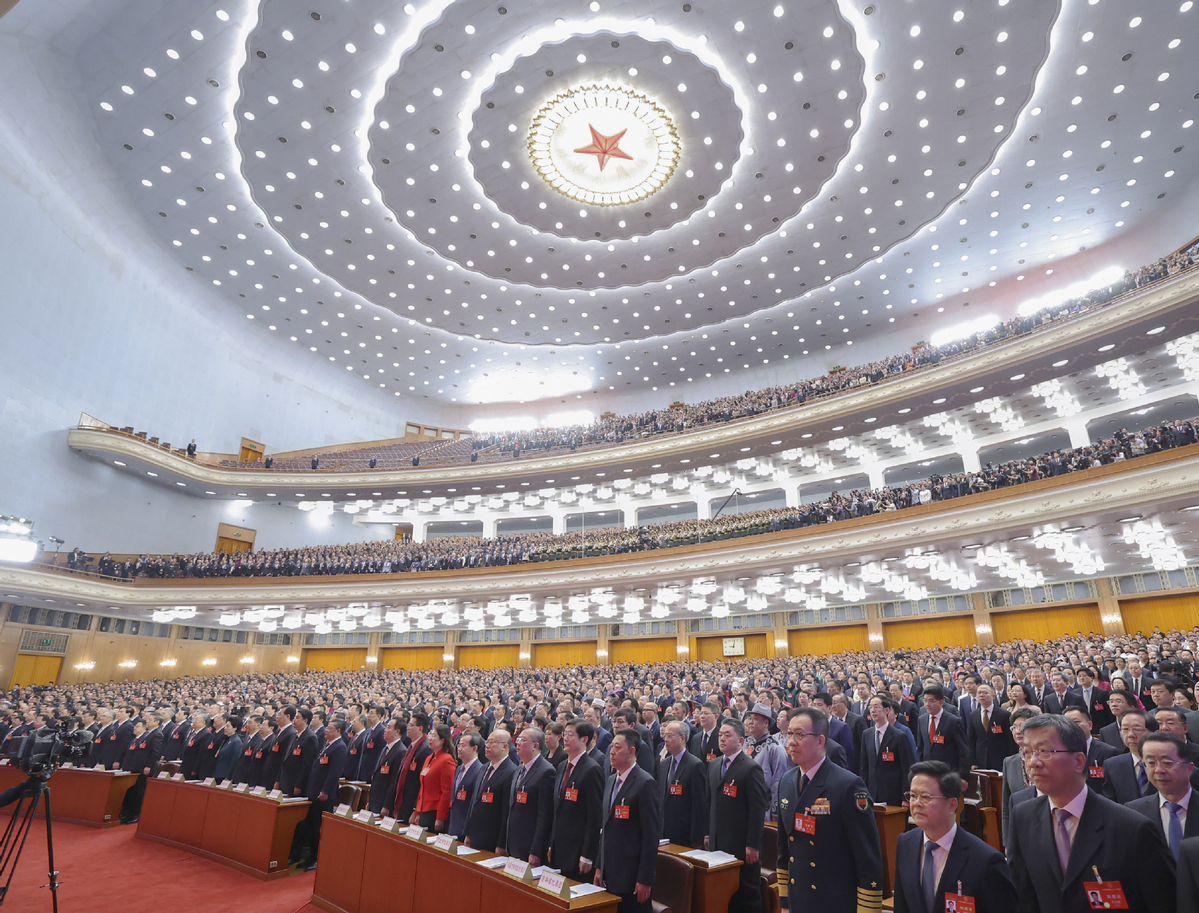
The 14th National People's Congress, China's national legislature, opens its second session at the Great Hall of the People in Beijing, March 5, 2024. (Photo: Xinhua)
On March 5, Chinese Premier Li Qiang delivered a government work report at the second session of the 14th National People's Congress in Beijing. The key points are as follows:
A review of government work in 2023
Gross domestic product (GDP) increased by 5.2 percent
Grain output reached a record of 695 million metric tons
12.44 million urban jobs were added
Additional tax and fee relief measures resulted in savings exceeding 2.2 trillion yuan
China accounted for over 60 percent of global electric vehicle output and sales
There was a 30-percent increase in exports of the “new trio,” namely, electric vehicles, lithium-ion batteries and photovoltaic products
Main targets for 2024
GDP growth of around 5 percent
Over 12 million new urban jobs
CPI increase of around 3 percent
Grain output of over 650 million metric tons
A drop of around 2.5 percent in energy consumption per unit of GDP
Major tasks for 2024
Finance: China has set the deficit-to-GDP ratio for this year at 3 percent. The general public expenditures in the government budget are projected to increase by 1.1 trillion yuan year on year.
Government investment: This year, 3.9 trillion yuan of special-purpose bonds for local governments will be issued. A total of 700 billion yuan will be earmarked in the central government budget for investment.
Special treasury bonds: China will issue ultra-long special treasury bonds over each of the next several years for the purpose of implementing major national strategies and building up security capacity in key areas, starting with 1 trillion yuan of such bonds this year.
Future-oriented industries: China will formulate development plans for the industries of the future, and open up new fields such as quantum technology and life sciences.
Digital economy: China will launch an AI Plus initiative.
Consumption: China will encourage and promote consumer goods trade-in programs and boost spending on intelligent connected new-energy vehicles, electronic products and other big-ticket items.
Housing: China will scale up the building and supply of government-subsidized housing and improve the basic systems for commodity housing.
Employment: China will strengthen measures to promote the employment of young people, and improve services and assistance for people in flexible employment based on their type of employment.
Rural vitalization: China will implement nationwide full-cost insurance and income insurance for the three main grain crops of rice, wheat and corn. China will build more electric vehicle charging facilities, cold chain logistics and courier delivery facilities in rural areas.
Urbanization: Urban renewal projects will be steadily advanced. China will address issues such as lack of elevators and parking in old residential compounds.
Education: China will launch an initiative to upgrade basic education and enhance general preschool education.
Health insurance: Government subsidies for basic medical insurance for rural and non-working urban residents will increase by an average of 30 yuan per person.
Social security: The minimum basic benefits for rural and non-working urban seniors will be raised by 20 yuan per month. China will continue to increase basic pensions for retirees and implement the private pension system nationwide. China will increase the supply of childcare services through multiple channels.
Opening-up: All market access restrictions on foreign investment in manufacturing will be lifted, and market access restrictions in services sectors, such as telecommunications and healthcare, will be reduced. The country will make it easier for foreign nationals to work, study and travel in China.
Environmental protection: China will improve fiscal, tax, financial, investment and pricing policies in support of green development as well as relevant market-based mechanisms.


